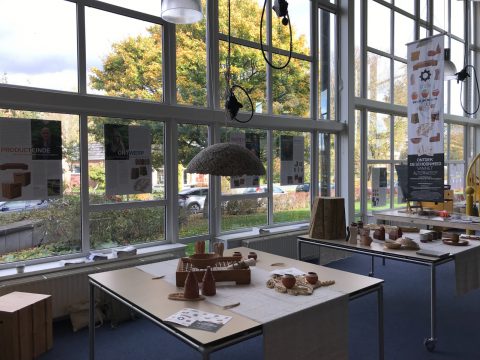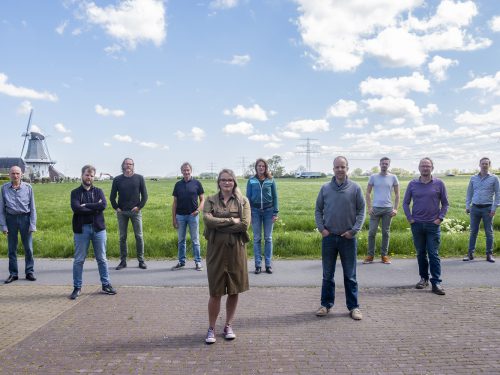WadWier
As the population and prosperity is increasing, there is also a high demand for dairy, meat and other food groups. With this increase, it has become visible how dependent we in the Netherlands are on raw materials imported from other countries and continents. When we speak of scarcity, a pandemic or other external factors, this will immediately threaten food and raw material supplies. It is therefore crucial for the Netherlands to become more independent by utilizing its own raw materials. According to research by the WUR (Wageningen University & Research), sustainable seaweed cultivation can contribute to the food supply of the growing world population. For the Netherlands, with its extensive maritime environment, this offers perspective. Within the framework starting locally is winning regionally, House of Design is building local chains to create a circular manufacturing industry in the Northern Netherlands. This is being done in the project Wad van Waarde, of which the outcomes of WadWier are a part of.
From seaweed to raw material
Seaweed has the properties to grow into a crop bigger than the top three crops; rice, corn and wheat. And can play a crucial role in the food supply of the future. To make the most of these opportunities, it is important to find out how the Netherlands can cultivate seaweed locally, on a large scale and as sustainably as possible as a raw material in the biobased manufacturing industry. This is why House of Design is a partner within the pilot in which seaweed is grown. With this pilot, an economically and ecologically feasible prototype of onshore aquaculture (growing aquatic plants and animals) of the Ulva (seaweed) has been developed. The aim of this pilot is to find out what influence the cultivation of the Ulva has on the values of the water and indirectly on the natural values of the Wadden Sea. This is being done in an economically and ecologically feasible prototype of onshore aquaculture. The starting point of this research is to determine what the optimal cultivation conditions are for optimal growth of the Ulva and what the future prospects are for the local cultivation of the Ulva.
Role House of Design
House of Design is investigating how seaweed cultivation can provide raw materials, to be used in the local circular production for the manufacturing industry of alternatives to ‘non-biodegradable plastics’. Examples of alternatives include developing natural plastic, a film and pigment for coloring linen spun from flax (this is being done within the Wad van Waarde project). This knowledge gained naturally needs to be transferred. This is why House of Design is organizing two knowledge-sharing activities in which designers, producers and other interested parties can learn about seaweed cultivation. The goal of these knowledge-sharing events is to develop a small collection of appealing consumer products from Ulva. With this, House of Design wants to highlight the potential of cultivating the Ulva and demonstrate that the Ulva can serve as a raw material for bio-based, multi-use and biodegradable products.
Research environment Eemshaven
Research on the cultivation of the Ulva is being conducted at two outdoor locations in Eemshaven. Studies on growth, production, composition and water quality are being conducted in a number of small basins. There is also a large basin at this location where seaweed is grown. This seaweed is used to test various applications. The reason for testing with a small and a large basin is because the results from the small basin cannot be translated to the results of cultivation in a large basin. The breeding basin for land-based seaweed cultivation is produced by CIV Offshore & Shipping and the field laboratory is staffed by the Hanzehogeschool in cooperation with NIOZ (Royal Netherlands Institute for Sea Research).
European significance seaweed cultivation
Investing in seaweed cultivation is not only important for the Netherlands. Cultivation can also give meaning to European objectives. An important part of these objectives is reducing CO2 emissions. Seaweed has the characteristic of absorbing 1.5 CO2eq per ton of dry matter, thus contributing to less CO2. Because seaweed can also be used as an energy source, it is a good substitute for fossil fuel energy. Dutch policy stems from European policy, which means that there is a lot of focus on climate and economy. Therefore, it is also important for the Netherlands to investigate the possibilities of seaweed cultivation at this time.
IN SHORT
Where: Wadden area and Eemshaven in Groningen
When: March 2022
Partners: House of Design, North Seaweed, CIV Offshore & Shipping, TCNN, Color&Brain and Hanze University Groningen
Financial support: Wadden Fund and own contribution
Website: https://wadwier.nl/








